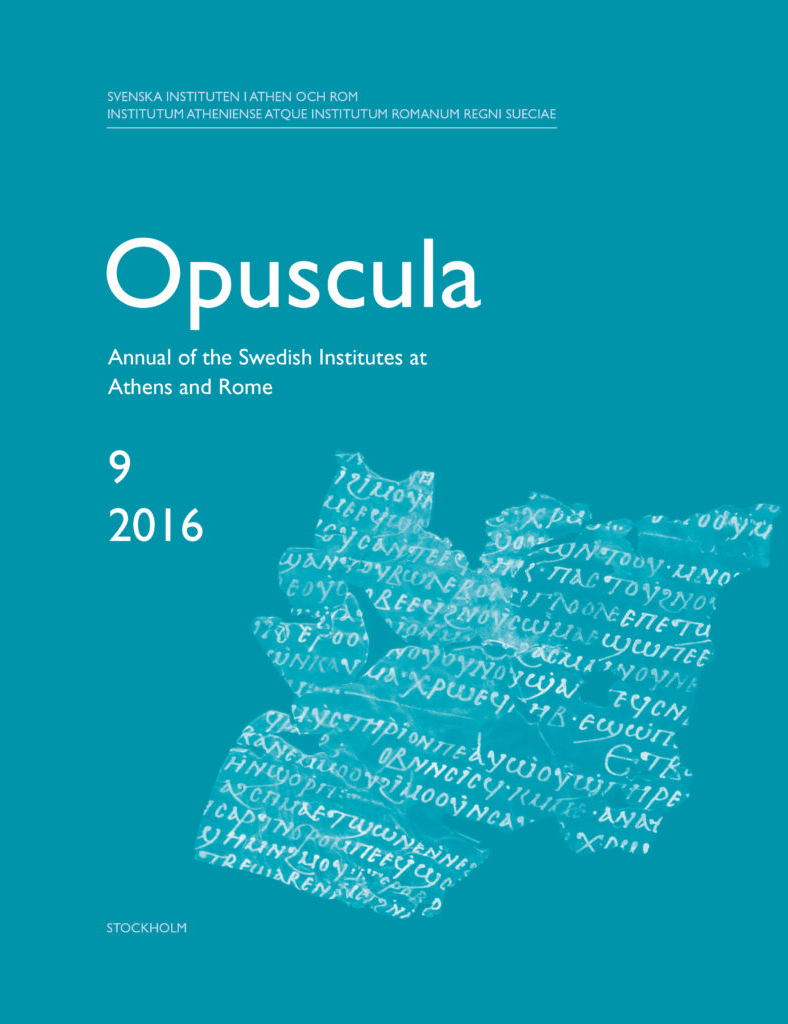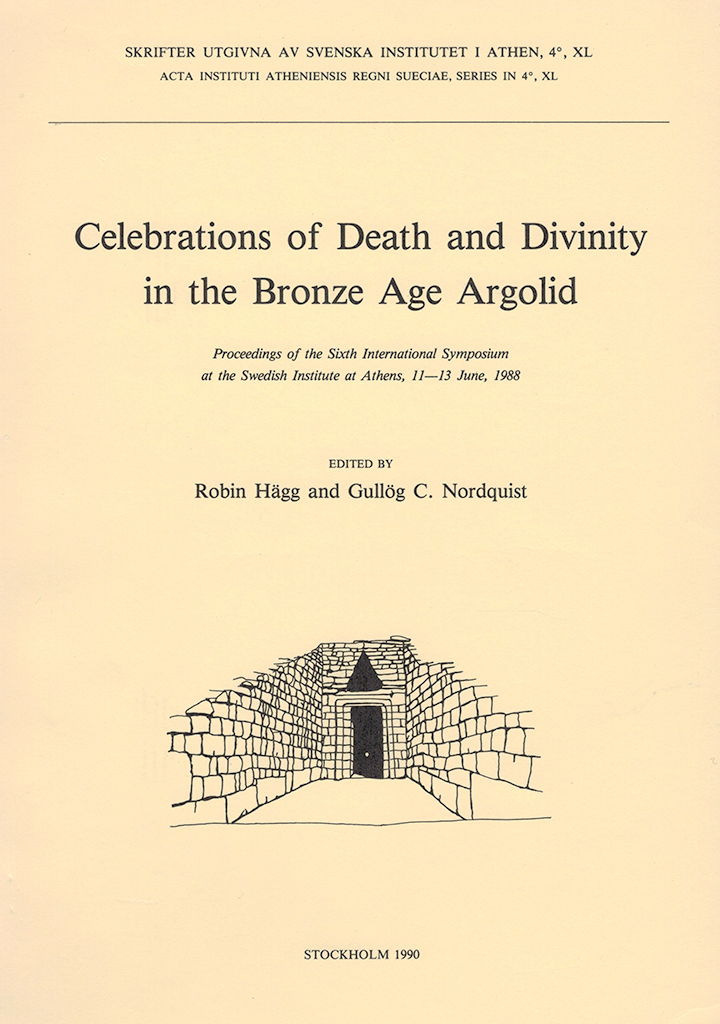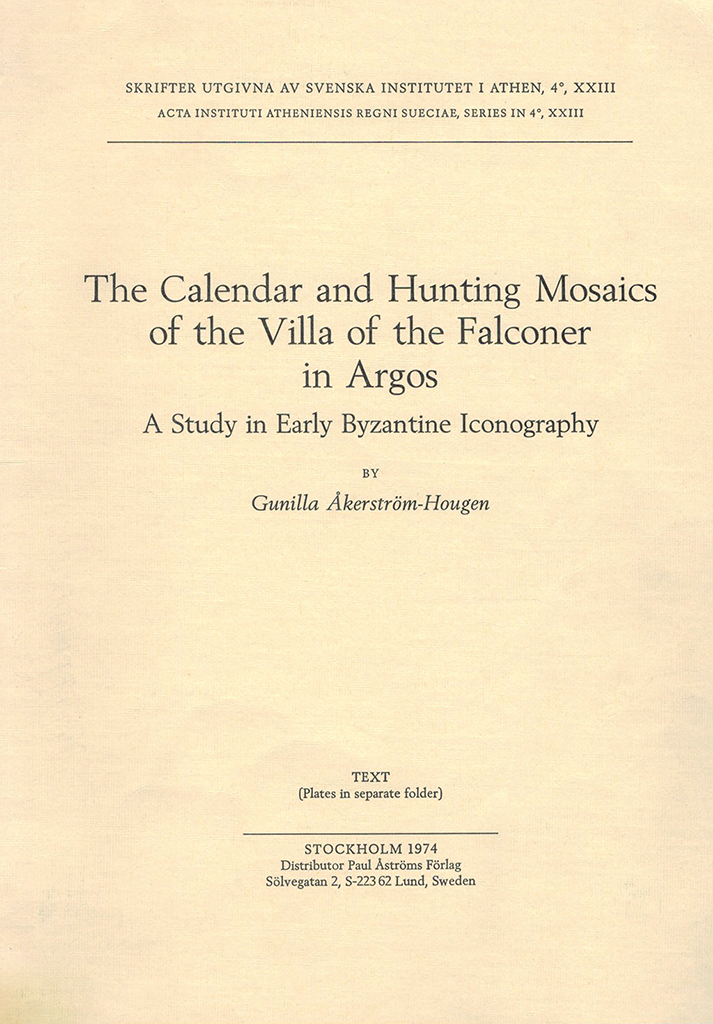Opuscula is published by the Swedish Institutes at Athens and Rome, with the aid of a grant from the Swedish Research Council. Distributed by Eddy.se AB. View journal at ERIH PLUS. All content available with open access. Textile tools from the East Gate at Mycenaean Midea, Argolis, Greece By Serena Sabatini Abstract This contribution presents in the first place an analysis and interpretation of all implements and tools possibly related to textile production that were recovered in the East Gate area at Midea during the Greek-Swedish excavation campaigns between 2000 and 2009. Secondly, with the help of comparative evidence from other zones on the citadel of Midea and also from other Mycenaean sites, it is argued that at least one multifunctional unit, where textile manufacture was also carried out, might have existed in the East Gate area. It is also suggested that this textile production comprised fine quality products to a significant extent. Finally, referring to signalling theory it is proposed that the fabrics possibly manufactured in the citadel served as means for the local community or élite to partake in the socio-cultural and political competition which seems to characterize Mycenaean society in general. Bibliographical information Serena Sabatini, ‘Textile tools…
Published by the Swedish Institute at Athens. Distributed by Astrom Editions. Pyrgouthi. A rural site in the Berbati Valley from the Early Iron Age to Late Antiquity. Excavations by the Swedish Institute at Athens 1995 and 1997 By Jenni Hjohlman, Arto Penttinen & Berit Wells, with contributions by Yannis Bassiakos, Katie Theodorakopoulou, Hero Granger-Taylor, Sven Isaksson, Petros Lymberakis, Dimitra Mylona, Maria Ntinou, Anaya Sarpaki & George Syrides Abstract This volume presents the results of the excavations in 1995 and 1997 at Pyrgouthi in the Berbati Valley, Argolis, Greece. The toponym is the local denomination for a Hellenistic tower, which has always been a prominent in the landscape. In the surface survey of the valley in 1988–1990 the tower was perceived as part of a Classical farmstead and in the ensuing excavation project it was targeted as such. However, the excavations revealed that this interpretation corresponded to but a fraction of the truth. The tower had been built on a knoll in the center of the valley but the earliest human activities at the site can be dated to the end of the Early Iron Age or the eight century BC. At this point in time, Arto Penttinen argues, the archaeological…
Published by the Swedish Institute at Athens. Distributed by Astrom Editions. Celebrations of death and divinity in the Bronze Age Argolid. Proceedings of the Sixth International Symposium at the Swedish Institute at Athens, 11–13 June, 1988 Edited by Robin Hägg & Gullög C. Nordquist Abstract Twenty-four papers on various aspects of burial customs and religious cult practice in the region Argolis (Greece) during the Bronze Age, read at an international conference in Athens; the papers are followed by transcripts of the discussions of the symposium. The papers are arranged in six groups, discussing (1) ceremonial practices in the Early and Middle Helladic periods, (2) mortuary customs, state formation and Mycenaean society, (3) burial rites in tumuli, tholoi and chamber tombs, (4) symbols and symbolism in Mycenaean celebrations, (5) Mycenaean cults and cult practices, and (6) religious aspects of the post-Bronze-Age period. Contents Preface (p. 7) Ceremonial practices in the Early and Middle Helladic periods Daniel J. Pullen, ‘Early Helladic burials at Asine and Early Bronze Age mortuary practices’, pp. 9–12 Miriam Caskey, ‘Thoughts on Early Bronze Age hearths’, pp. 13–21 Carol Zerner, ‘Ceramics and ceremony: Pottery and burials from Lerna in the Middle and early Late Bronze Ages’, pp. 23–34…
Published by the Swedish Institute at Athens. Distributed by Astrom Editions. The calendar and hunting mosaics of the Villa of the Falconer in Argos. A study in early Byzantine iconography By Gunilla Åkerström-Hougen Contents Preface 1. Introduction 2. Description 3. Composition 4. Costume and equipment 5. Style 6. Iconography 7. Appendix: Late Roman and Byzantine representations of the calendar 8. Summary Bibliography Abbreviations General index Bibliographical information Gunilla Åkerström-Hougen, The calendar and hunting mosaics of the Villa of the Falconer in Argos. A study in early Byzantine iconography (Skrifter utgivna av Svenska institutet i Athen, 4°, 23), Stockholm 1974. ISSN 0586-0539. ISBN 9789185086108. Softcover: 167 pages + 12 plates in separate folder. Alternative series title: Acta Instituti Atheniensis Regni Sueciae series in 4˚, XXIII Reviews American Journal of Archaeology 81:1, 109–110 (Anthony Cutler) Bulletin de l’Association Guillaume Budé 1976, 430–433 (Michèle Blanchard) Bulletin de l’Association internationale pour l’étude de la mosaïque antique 7, 1978, 300–305 (J.P. Sodini) Byzantinische Zeitschrift 73:1 (Raffaela Farioli) The Classical Review 26:2, 256–258 (Michael Vickers) The Classical World 69:7, 487 (J.K. Anderson) Journal of Hellenic Studies 96, 256–257 (Elisabeth Waywell) L’Antiquité Classique 44:2, 808–810 (Charles Delvoye) Revue des études grecques 89, 1976, 140–142 (Philippe Bruneau)




